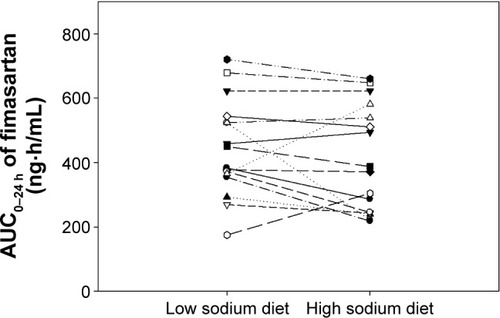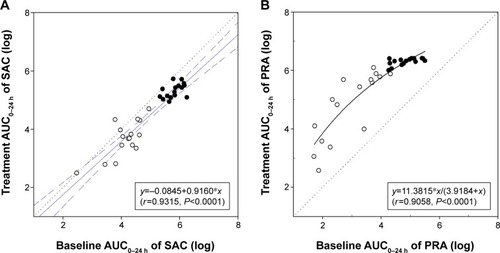Figures & data
Table 1 Urinary excreted amount of electrolyte, plasma renin activity, plasma aldosterone concentration, and blood pressure during the low sodium diet and high sodium diet periods (n=16)
Table 2 Summary of pharmacokinetic parameters of fimasartan during the low sodium diet and high sodium diet periods (n=16)
Figure 1 Mean plasma concentration–time curves of fimasartan during the low sodium diet and high sodium diet periods.

Figure 2 Comparison of individual systemic exposure of fimasartan during the low sodium diet and high sodium diet periods.

Figure 3 Comparison of baseline area under the curve from before dose to 24 hours after dose (AUC0–24 h) versus treatment AUC0–24 h.

